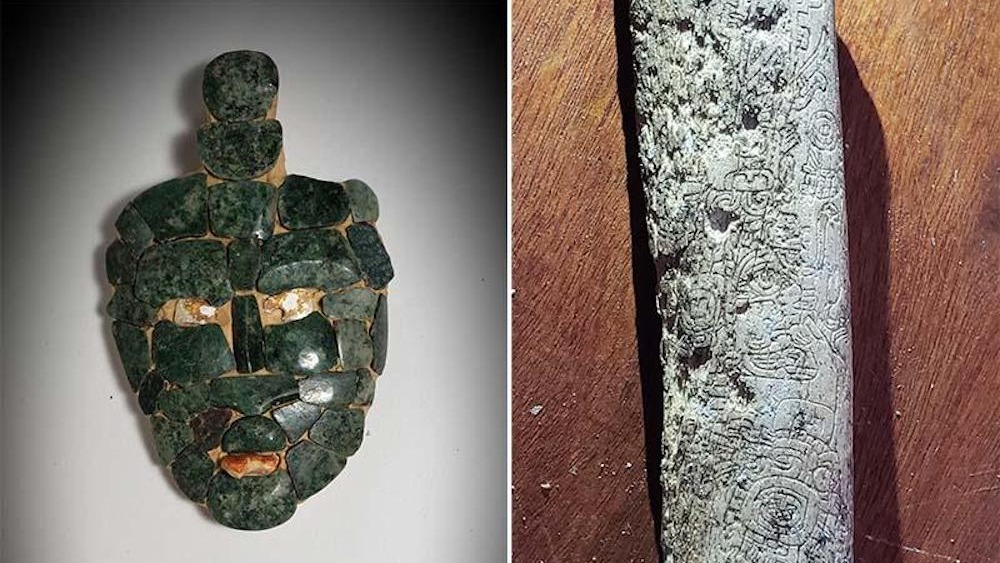Jade mask depicting Maya storm god unearthed in royal tomb in Guatemala
The 1,700-year-old Maya tomb houses a number of artifacts, including a mosaic jade mask.

Archaeologists have discovered a 1,700-year-old royal tomb in Guatemala that's overflowing with funeral offerings, including an intricately designed jade mask depicting a Maya deity.
The tomb, which is located at an archaeological site known as Chochkitam near the borders of what are now Mexico and Belize, was the burial site for a previously unknown Maya king, according to a statement from Tulane University.
Along with the mosaic mask designed to resemble the Maya storm god, researchers found 16 mollusk shells and hieroglyphs carved into human femurs (thigh bones), including one drawing depicting a man holding a jade mask similar to the artifact tucked inside the tomb. Researchers think the hieroglyphs identify the king's father and grandfather and serve as a link to the ruler of the Maya states of Tikal and Teotihuacan.
"A discovery like this is a bit like winning the lottery in terms of information," lead archaeologist Francisco Estrada-Belli, a research assistant professor at Tulane University who discovered the tomb in 2022, said in the statement. "It opens a window into an obscure time we have little texts about."
Related: Circular temple dedicated to Maya serpent deity discovered in Mexico
This era, known as the Maya Classic period, stretched from roughly A.D. 250 to 900 and is considered the height of the Mesoamerican civilization's rule.
Unfortunately, due to looting, very little physical evidence remains from this time period. In fact, it's by sheer luck that Estrada-Belli and his team discovered the tomb, since looters dug only 6.5 feet (2 meters) from the burial chamber before abandoning the site.
Sign up for the Live Science daily newsletter now
Get the world’s most fascinating discoveries delivered straight to your inbox.
In addition to the mask and mollusk shells, archaeologists found a rare spiny oyster "used by royalty as jewelry and currency as well as in religious and sacrificial offerings," according to the statement.
Archaeologists plan to conduct DNA testing on the bones to uncover more information about the burial's occupant.
Jennifer Nalewicki is former Live Science staff writer and Salt Lake City-based journalist whose work has been featured in The New York Times, Smithsonian Magazine, Scientific American, Popular Mechanics and more. She covers several science topics from planet Earth to paleontology and archaeology to health and culture. Prior to freelancing, Jennifer held an Editor role at Time Inc. Jennifer has a bachelor's degree in Journalism from The University of Texas at Austin.









